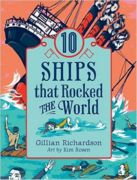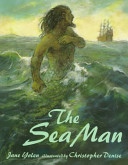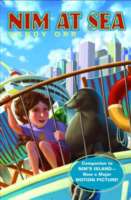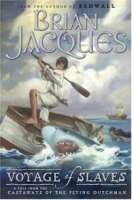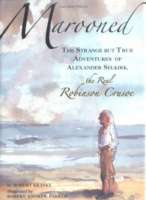
In 1704, Alexander Selkirk was voyaging across the South Pacific when, after arguing with the ship’s captain, he was put ashore—alone—on an uninhabited island. Equipped with little more than a musket and his wits, Selkirk not only survived in complete solitude for more than four years, but came to be quite comfortable and happy. After being rescued by a British privater in 1709, he took a leading role in several dramatic captures of merchant ships. Although he returned to civilization a rich man,he couldn’t find a place in society and always longed to return to the paradise of his island. Selkirk’s well-documented adventures so inspired Daniel Defoe that they became the basis for his perennial classic, Robinson Crusoe. Author’s note, glossary, bibliography,index.
